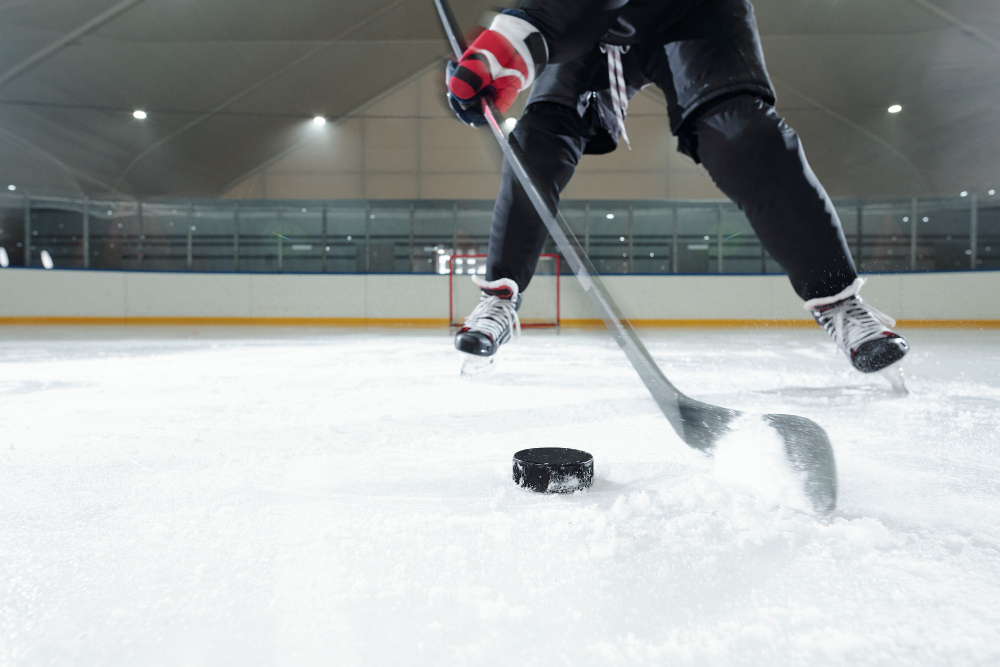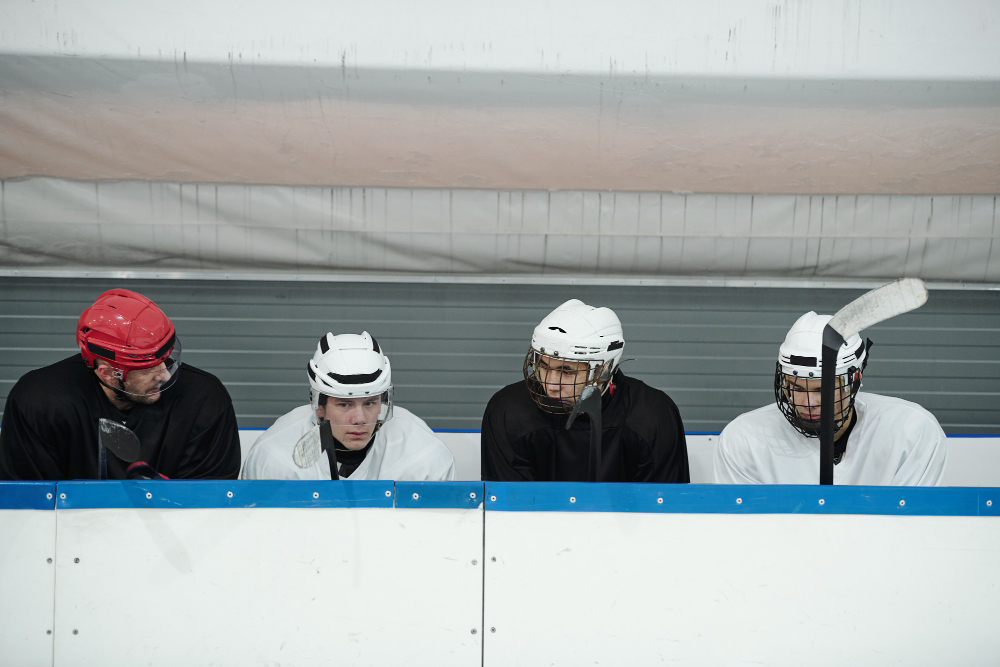Hockey is a sport that has captured the hearts of millions around the world. With its fast-paced action, physicality, and incredible skill, it's no wonder that hockey has become a beloved pastime for many. In this blog post, we will explore the origins of hockey, delving into its roots and tracing its evolution over time. We will also uncover the basics of the game, diving into the rules and equipment that make hockey unique. Additionally, we will discuss the speed and agility of hockey players, exploring the athleticism required to excel in this sport. Furthermore, we will delve into the importance of skating in hockey, highlighting how this skill sets players apart on the ice. Finally, we will examine strategies to navigate the ice in hockey, offering tips and techniques for success. Join us as we dive into the exciting world of hockey and discover what makes it such an exhilarating and dynamic sport.

Hockey is a popular sport played all over the world, but have you ever wondered about its origins? The origins of hockey can be traced back to ancient times, with various forms of stick and ball games being played in different cultures. One of the earliest known versions of the game was played in ancient Egypt over 4,000 years ago, where it was known as "shinty" or "hurling". These early versions of hockey involved using a stick to hit a ball into a goal or target, similar to the modern game we know today.
In the Middle Ages, a similar game called "bandy" became popular in England. This game was played on ice, making it a precursor to modern ice hockey. Bandy involved using a curved stick to hit a ball, with teams competing against each other to score goals. The game spread throughout Europe, with each country adopting its own variations and rules.
The modern game of hockey as we know it today began to take shape in the 19th century. The first official set of rules was established in 1875 by the Montreal Hockey Club, making it the birthplace of organized ice hockey. From there, the sport gained popularity in Canada and quickly spread to other parts of the world.
| Time Period | Description |
|---|---|
| Ancient Times | Various forms of stick and ball games |
| Middle Ages | Game of "bandy" played on ice |
| 19th Century | Establishment of official rules and spread of organized ice hockey |
Hockey is a popular sport that is played all around the world. It has roots that trace back centuries and has evolved into the fast-paced and exciting game we know today. In order to fully appreciate and understand hockey, it is important to grasp the basics of the sport.
One of the fundamental aspects of hockey is the equipment. Players wear specific gear to protect themselves and maximize their performance on the ice. This includes a helmet, shoulder pads, elbow pads, gloves, shin guards, and skates. Each piece of equipment serves a crucial purpose in keeping players safe and allowing them to move freely.
The game of hockey is played with a small, hard rubber disc called a puck. The goal of the game is to score by shooting the puck into the opponent's net, while simultaneously defending your own net. Teams consist of six players on the ice at a time, including a goaltender whose primary responsibility is to prevent the opposing team from scoring.
| Size | Flex |
|---|---|
| Senior | 85-110 |
| Intermediate | 70-85 |
| Junior | 50-70 |
Overall, the basics of hockey encompass understanding the equipment, rules, and skills necessary to play the game. Whether you are a player or a fan, having a solid foundation of knowledge in these areas will enhance your enjoyment and appreciation of the sport.
When it comes to the sport of hockey, one of the key attributes that separates the elite players from the rest is their speed and agility on the ice. The fast-paced nature of the game demands players who can quickly accelerate, change directions, and react in a split second. The combination of speed and agility allows players to outmaneuver their opponents, create scoring opportunities, and prevent the opposing team from gaining an advantage.
Speed in hockey is not just about how fast a player can skate in a straight line. It also encompasses their ability to quickly transition from one movement to another, such as going from skating to turning or stopping. Good skating technique and powerful leg muscles are essential for generating speed on the ice.
Agility, on the other hand, refers to a player's ability to change directions rapidly and with precision. Hockey players need to be able to pivot, spin, and make sharp turns while maintaining their balance and control. This allows them to evade defenders, make quick passes, and get into scoring positions.
| Speed | Agility |
|---|---|
| Allows players to outskate opponents | Enables quick changes of direction |
| Creates scoring opportunities | Aids in evading defenders |
| Enhances overall on-ice performance | Helps in making quick passes |
In addition to physical conditioning and skating technique, mental attributes also play a crucial role in a player's speed and agility. Quick decision-making, anticipation, and spatial awareness are important cognitive skills that enable players to react rapidly to the ever-changing game situations. Developing these mental skills through game-like scenarios and drills helps players make split-second decisions and execute rapid movements on the ice.
In conclusion, the speed and agility of hockey players are essential for their success on the ice. Through physical conditioning, proper skating technique, and cognitive training, players can improve their speed, agility, and overall performance. Being able to navigate the ice quickly and change directions with precision allows players to gain an advantage over their opponents, contributing to their team's success in the game of hockey.
Skating is a fundamental skill in the game of hockey and carries great importance in a player's performance on the ice. It is not only crucial for maneuvering around the rink but also plays a significant role in various aspects of the game, including speed, agility, and overall player development. In this article, we will delve into the key reasons why skating is vital in the game of hockey and explore how it affects a player's ability to excel in different areas.
Enhancing Speed and Acceleration: Skating is the primary means of locomotion in hockey, and speed is a highly sought-after attribute in the sport. Efficient and powerful skating technique allows players to accelerate quickly, giving them an advantage in breakaways, races for loose pucks, and offensive attacks. By focusing on proper skating mechanics, such as proper stride length, strong leg drive, and effective weight transfer, players can improve their speed and acceleration on the ice.
Improving Agility and Maneuverability: Hockey is a fast-paced game that requires players to quickly change directions, pivot, and evade opponents. Skating skills directly impact a player's ability to maneuver effectively on the ice and make quick turns, cuts, and pivots. By practicing edge control, crossovers, and tight turns, players can enhance their agility and become more elusive, making it difficult for opponents to keep up or gain possession of the puck.
| Edge Control | Crossovers | Tight Turns |
|---|---|---|
| Allows players to make sharp turns and change directions quickly by utilizing the edges of their skates. | Enables players to efficiently transition from one side to the other, maintain speed around corners, and gain an advantage over opponents. | Facilitates the ability to make tight turns while maintaining balance and control, allowing for quick changes in direction. |
Facilitating Skill Execution: Skating proficiency significantly impacts a player's ability to execute various skills, such as shooting, passing, and stickhandling. Proper skating ensures players are in the correct position, balanced, and stable, enabling them to generate more power and accuracy in their shots, deliver precise passes, and maintain control of the puck while in motion. Skating mechanics are interconnected with other hockey skills, and mastery of skating allows players to perform these skills efficiently and effectively in game situations.
Overall, skating is the foundation upon which all other aspects of hockey are built. It is imperative for players to devote time and effort to enhance their skating abilities in order to excel in the game. By focusing on improving speed, agility, and maneuverability on the ice, players can elevate their performance and make significant contributions to their team's success.

Ice hockey is a thrilling sport that requires players to possess a unique set of skills and strategies in order to navigate the ice effectively. In this blog post, we will explore some key strategies that hockey players employ to maneuver on the ice and gain an advantage over their opponents.
One of the most fundamental strategies in navigating the ice in hockey is maintaining proper positioning. Players need to constantly be aware of their surroundings and ensure they are in the right place at the right time. This involves understanding the different zones on the ice, such as the offensive zone, defensive zone, and neutral zone, and knowing where to position oneself to support the team's offensive or defensive play.
Another important aspect of navigating the ice is understanding and utilizing effective communication with teammates. Hockey is a fast-paced game, and being able to communicate efficiently with your teammates can greatly enhance your team's performance. Players often use different hand signals, verbal cues, or even eye contact to indicate their intentions or call for a pass, allowing for smoother transitions and coordinated plays.
Furthermore, effective skating techniques are crucial for successfully navigating the ice in hockey. Skating speed and agility can be a major advantage when it comes to beating opponents and getting into scoring positions. Hockey players often undergo rigorous training to improve their skating abilities, focusing on areas such as stride length, quick turns, and acceleration. By honing their skating skills, players can move swiftly and fluidly across the ice, making it harder for the opposing team to keep up.
| Positioning | Communication | Skating |
|---|---|---|
| Understand different zones | Use hand signals | Improve stride length |
| Be in the right place | Utilize verbal cues | Master quick turns |
| Support offensive/defensive play | Establish eye contact | Enhance acceleration |